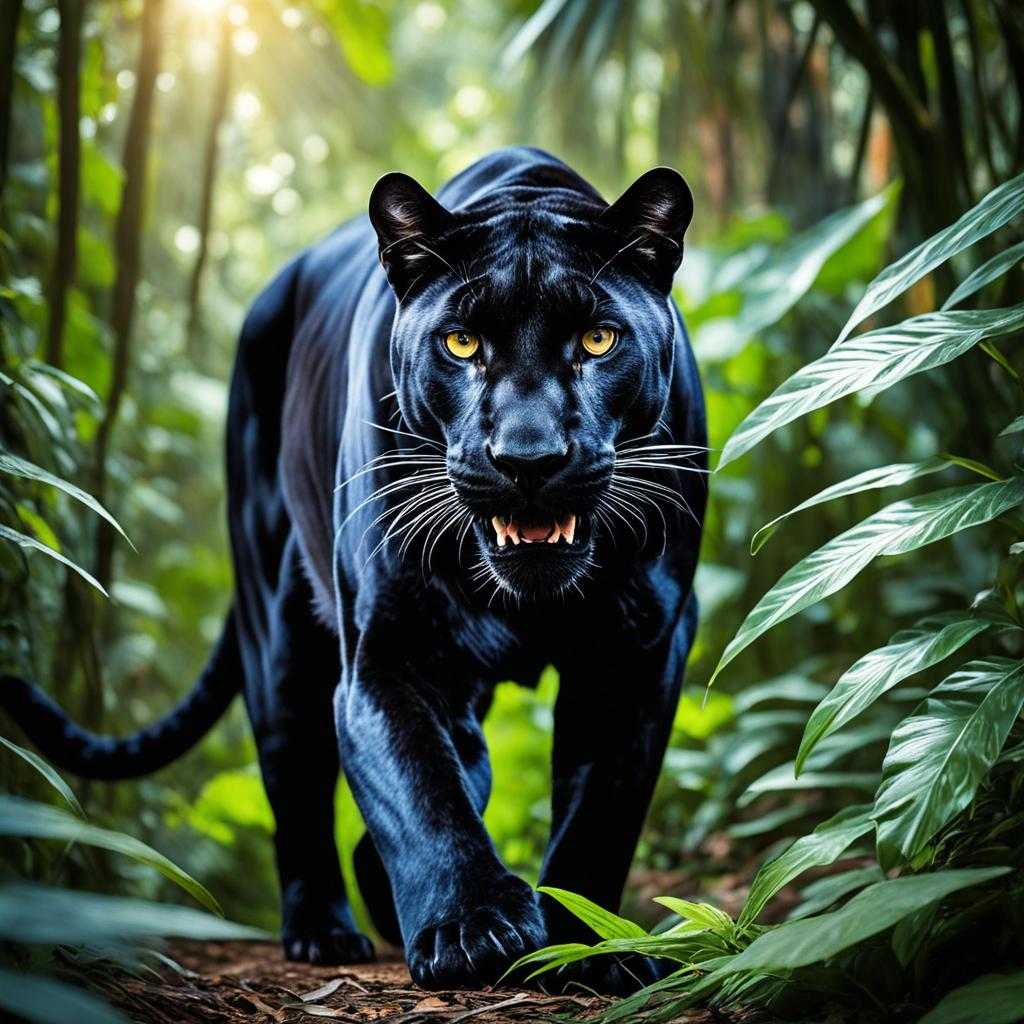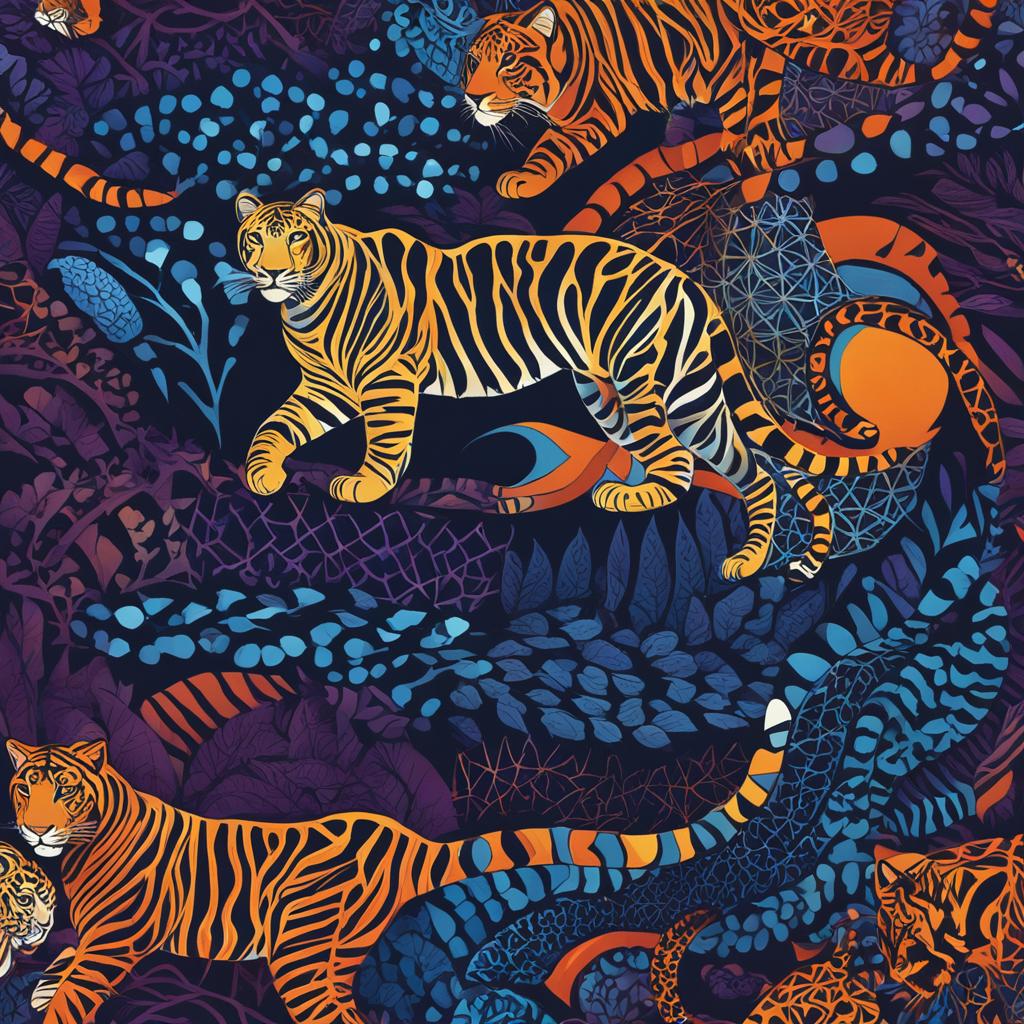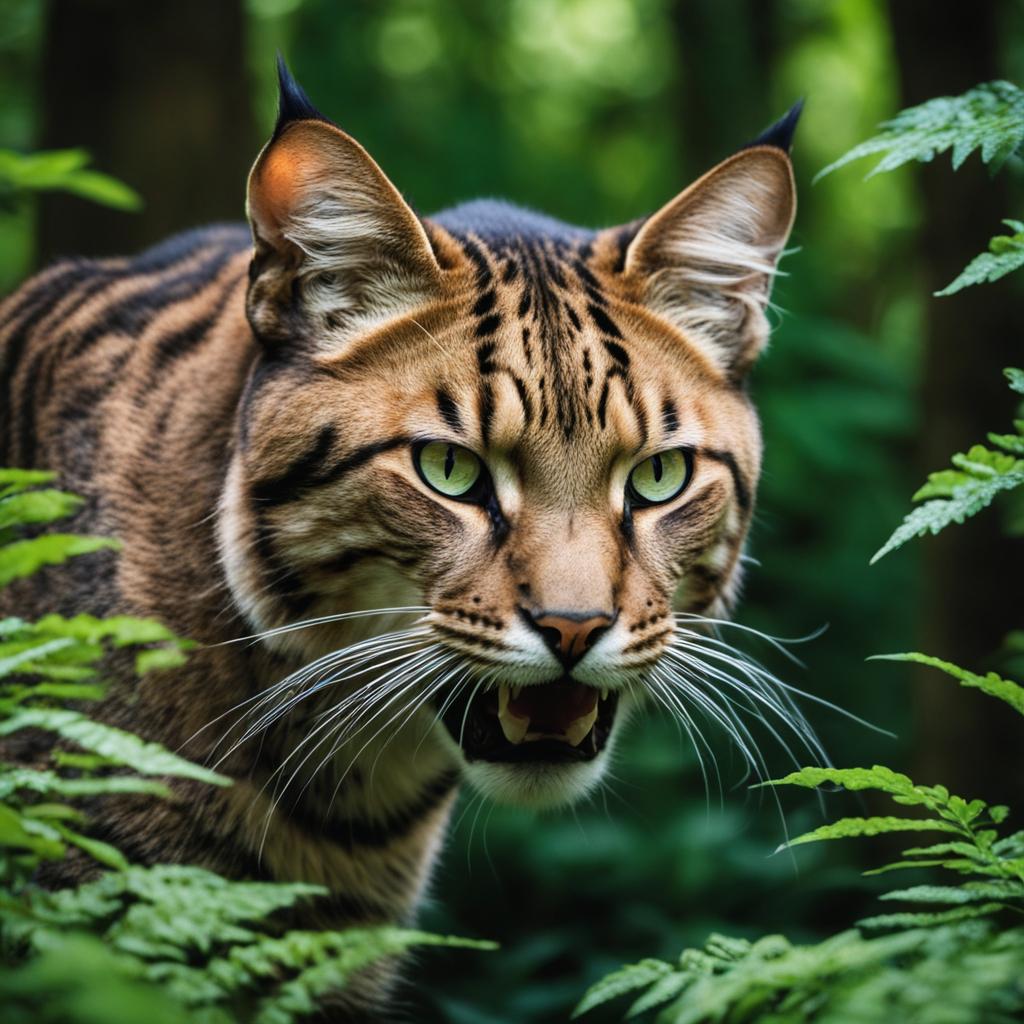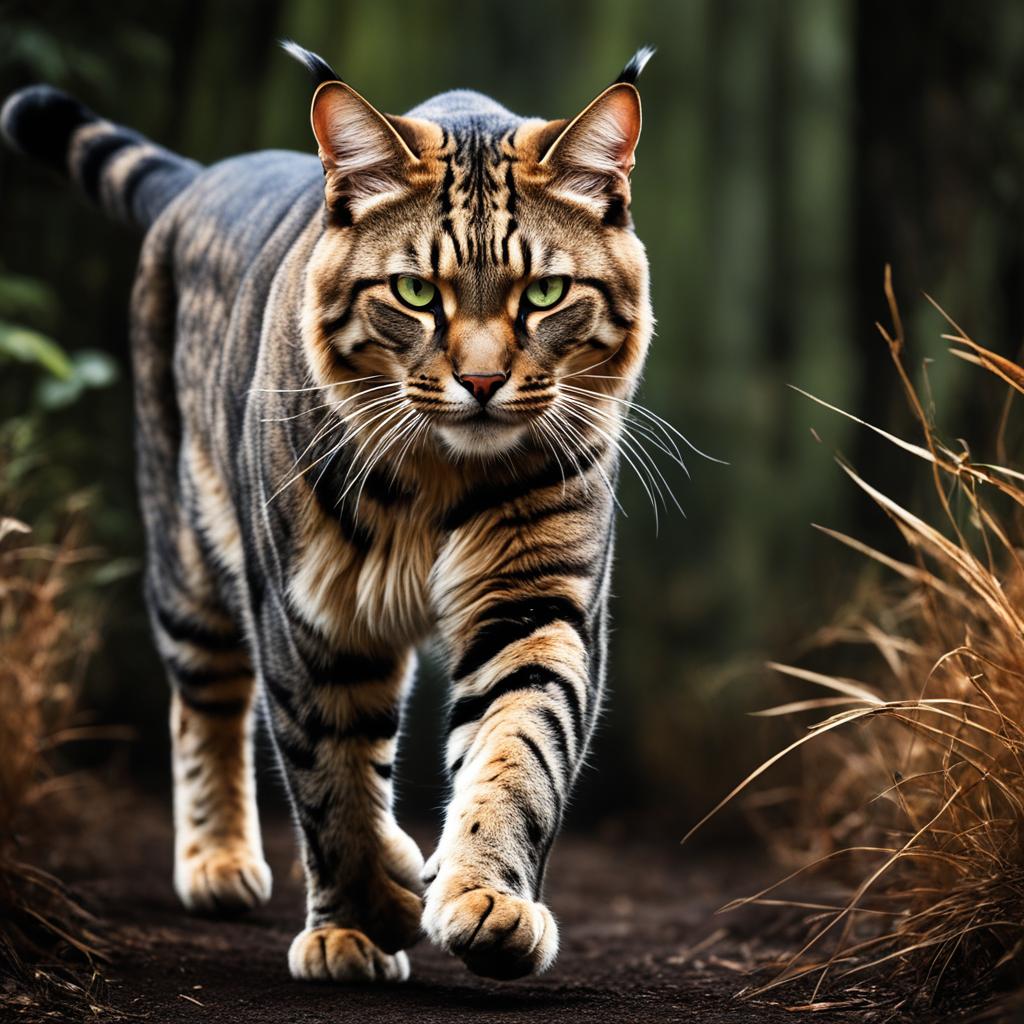
When you think of a dangerous cat, your mind might jump to powerful wild cats like lions, tigers, or jaguars. You rarely consider domestic cats threatening, but there have been incidents of even household pets showing extreme aggression. Today, we will unveil the reality of feral, domestic, and wild cats and discuss their potential dangers. We’ll also investigate aggressive cat breeds and their fascinating qualities that captivate the human imagination.
Key Takeaways
- Understanding the potential dangers of feral, domestic, and wild cats.
- Exploring aggressive cat breeds and their unique characteristics.
- Investigation of the genetic adaptations that make some wild cats the deadliest.
- Unraveling the mysteries of alleged big cat populations in the British countryside.
- Addressing the delicate balance between public safety and wildlife conservation.
- Recognizing the importance of effective animal control measures for potentially hazardous pets.
- Examining the impact of dangerous cat species on people, wildlife, and the environment.
Escaping Domestic Terror: The Case of Florida’s Menacing Feline

Florida is notorious for sightings of dangerous animals on the loose, and a recent incident in Suwannee County has captured attention due to a seemingly harmless domestic cat that has caused significant harm to individuals. This unusual case serves as a stark reminder of the potential danger posed by dangerous domestic cats, the challenges in capturing these hazardous wild cats, and the importance of effective animal control measures.
Untamed Nuisance: The Feral Cat in Suwannee County
In Suwannee County, a domestic cat with an unusually aggressive demeanor has become a cause for concern. This violent feline species has injured two individuals, forcing them to seek emergency medical care. The severity of the injuries and the unpredictable behavior of the cat have raised alarm among the local population.
The Elusive Predator: Challenges in Capturing the Feral Menace
Despite efforts by local authorities to capture this aggressive cat, it remains at large. Law enforcement has set traps and alerted the public about the potential risk of rabies, but so far, the animal has evaded capture. The difficulty in apprehending this menace has left residents in Suwannee County exercising extreme caution and keeping a watchful eye on their surroundings.
Rabies Alert: The Hazard of an Uncaught Aggressive Cat
Beyond the physical injuries inflicted by this feral cat, another significant concern is the possible transmission of diseases, specifically rabies. Rabies is a potentially fatal viral infection transmitted through the bite of an infected animal. With the cat still on the loose, residents must be vigilant and take necessary precautions to protect themselves and their families, reiterating the importance of a swift and effective response to any feral cat warning.
The Evolutionary Edge: Insights into the Genetics of Deadly Big Cats

Researchers from Texas A&M School of Veterinary Medicine & Biomedical Sciences have uncovered fascinating information about the genetics of various cat species, including some of the deadliest big cats and lethal cat breeds. Their groundbreaking research focuses on the genomic stability of large cats and how genetic adaptations contribute to the development of ferocious cats within the feline family.
Stable Yet Lethal: The Genomic Stability of Large Cats
One key finding is the remarkable genomic stability of large cats’ chromosomes. This stability has allowed these cats to maintain their prowess as some of the most formidable hunters in the animal kingdom while still adapting to their environments. Genomic stability enables these lethal cat breeds to preserve their unique traits, such as their strength, agility, and sensory capabilities.
DXZ4: The DNA Sequence Contributing to Cat Speciation
An intriguing discovery within feline genetics is the DNA sequence DXZ4, which is located on the X chromosome. This particular sequence has been linked to the speciation of domestic and jungle cats, offering insight into how different cat species have branched off from a common ancestor over time. This information is vital in understanding the evolutionary factors that contribute to the existence of the diverse array of cat species we see today.
Olfactory Genes: A Scent of Danger in Feline Hunting Habits
Another important aspect of feline genetics centers on their olfactory genes. Some of the deadliest big cats, like tigers, rely on their keen sense of smell to track prey over vast territories. Understanding the genetic factors that contribute to their advanced olfactory abilities enables researchers to better grasp how genetics directly shape these cats’ hunting habits, behavioral traits, and overall survival strategies.
Through a deeper understanding of the genetics of deadly big cats and other lethal cat breeds, we gain valuable insights into the physical capabilities, behavioral traits, and adaptations that set these ferocious cats apart. This knowledge not only fuels our fascination with these incredible animals but also paves the way for informed conservation efforts and responsible coexistence with our feline counterparts.
Britain’s Big Cat Phenomenon: A Quest for the Truth

The British countryside is rife with tales of big cats at large, a scenario backed by an 86-page dossier obtained through a Freedom of Information request. This controversial compilation of evidence indicates that government officials and agencies are aware of and have actively investigated big cat sightings, even as they appear to suppress the findings from the public.
The leaked documents recount various findings, including detailed expert analysis of livestock killings and the presence of wild violent feline species, which are both sensational and unsettling. This knowledge feeds into the narrative of a covert population of formidable cats within Britain that government entities reluctantly acknowledge.
The dossier highlights the elusive nature of these mysterious predators, leaving the public with more questions than answers. Are there big cat populations hidden deep in the rural British countryside, away from human settlements? What species do these cats belong to? And how has the government effectively managed the situation to avoid mass panic?
“There are hundreds of reports each year of big cats prowling around the British countryside.”
Documented sightings have ranged from panthers, leopards, and even possible hybrids of wild big cats and domestic felines. The diverse range of sightings has fueled wild speculations and conspiracy theories. As stories of big cats in Britain continue to circulate, public interest in the phenomenon remains high.
- Increased big cat sightings in the area
- Evidence of large feline tracks
- Signs of livestock being hunted and killed by mysterious predators
- Local expert knowledge supporting the existence of big cats in the region
Acknowledging these sightings is crucial, as the public needs access to accurate information for not only awareness but also to avoid resorting to unnecessary and harmful measures in response. At the same time, striking the right balance between transparency and maintaining public safety remains a delicate and challenging task.
What is the Most Dangerous Cat?

When it comes to identifying the most dangerous cat, opinions may differ. However, it is evident that there is a spectrum of aggression and danger across both domestic and wild felines. To better understand the varying levels of risk posed by these creatures, we will examine some well-known aggressive cat breeds and compare the natural weapons of wild and domestic felines.
Aggressive Cat Breeds on the Prowl
Among the numerous domestic cat breeds, certain ones are known for their assertive behavior. Some examples of aggressive cat breeds include the Siamese, Bengal, and Sphynx. While typically not dangerous to humans, these breeds, when provoked or frightened, may exhibit increased aggression compared to other household cats. It is essential for potential pet owners to research and understand the temperament of a cat breed before adopting one into their homes.
Deadly Natural Weapons: Comparing Wild and Domestic Felines
Comparing the natural weapons of wild and domestic cats further emphasizes their differences in danger levels. Wildcats, such as lions, tigers, and leopards, are equipped with powerful muscles, sharp claws, and formidable teeth, making them incredibly efficient hunters. In contrast, domestic cats have tamer versions of these attributes but are generally ill-suited for taking down large prey.
Moreover, wild cats possess highly developed senses, such as keen eyesight, excellent hearing, and exceptional olfactory abilities. These sensory advantages, coupled with their natural camouflage, make them deadly predators in their natural habitats. Domestic cats also have these sensory attributes, but they are not as finely tuned or utilized in the same manner as their wild counterparts.
In conclusion, while there may not be a definitive answer to the question, “What is the most dangerous cat?”, it is clear that there is a wide range of aggression and risk across both domestic and wild feline species. Understanding the varying levels of danger and the intricate differences between these animals can help us appreciate them while also respecting the challenges they present in terms of wildlife conservation and public safety.
Unveiling The Secret World of Hybrid Big Cats in the U.K.

The existence of hybrid big cats in the UK has raised concerns and curiosity, particularly due to claims of governmental secrecy. Reports of big cat hybrids are further fueled by laboratories refusing to disclose DNA test specifics. These mysterious creatures represent a new enigma in the realm of dangerous cat species, with possible secret wildlife populations evading public recognition and official disclosure.
Governmental Secrecy: The Hidden Existence of Mysterious Predators
Allegations of governmental secrecy add intrigue to the existence of hazardous wild cats. Official reluctance to provide information has led to growing public suspicion, further igniting curiosity about these predator sightings. With increasing debates over transparency and public safety, individuals are left to wonder about the true extent of governmental knowledge and involvement.
Hybrid Species: The New Predators Among Us
Hybrid species of big cats potentially hide in plain sight. Reports of unknown cat species may signify these hazardous wild cats finding their way into human-populated environments. Experts discuss the management of these ‘problem’ big cats with preferences for tranquilization over lethal methods. However, the lack of protection for non-native species could eventually prompt more drastic actions. The question persists: how can society address the balance between public safety and the conservation of these enigmatic creatures?
How does one address the balance between the public’s safety and the conservation of these mysterious creatures?
Conclusion
The presence of dangerous cats, whether they are domestic gone rogue or wild creatures venturing close to human habitats, has a significant impact on both people and native wildlife. The challenge lies in addressing the real or perceived threats these cats present while respecting the need for conservation efforts. Encounters with aggressive cats, like in Florida, or the supposed big cats in Britain, highlight the delicate balance between ensuring public safety and preserving these formidable feline species.
Impact on People and Wildlife: Addressing the Presence of Dangerous Cats
From domestic breeds with a propensity for aggression to their wild and mysterious counterparts, dangerous cats present unique challenges to human society. Careful consideration must be given to maintain a respectful coexistence with these animals while taking necessary actions to protect both people and native wildlife. Strategies to address this issue range from public awareness campaigns to effective animal control measures.
Preservation vs. Safety: Balancing Conservation Efforts with Public Concern
The conversation on how to balance the need to preserve and protect wild cat species with public safety concerns is a crucial one. Decisions must be made on when and how to intervene, choosing between methods such as tranquilizing or lethal action, and handling new developments like the emergence of hybrid species. Ultimately, creating a harmonious relationship between human society and the animal kingdom requires careful planning, respectful coexistence, and an informed public.




